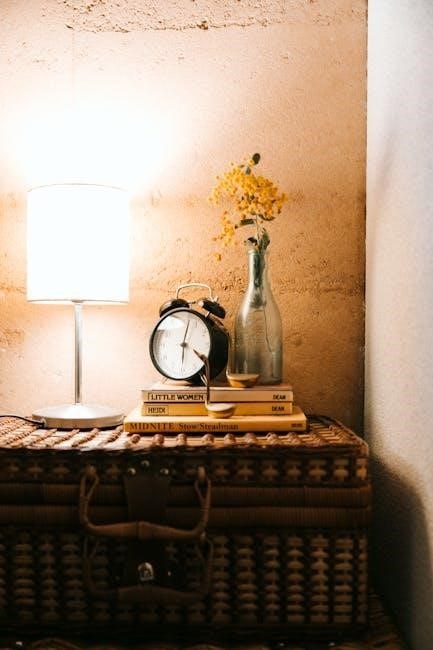This guide provides essential insights into identifying and valuing antique clocks, offering detailed information on historical context, craftsmanship, and market trends to help enthusiasts and collectors alike.
Overview of Antique Clocks
Antique clocks are timeless pieces that reflect historical craftsmanship and cultural heritage. From grandfather clocks to mantel and wall clocks, these timepieces showcase intricate designs, mechanical precision, and artistic mastery. They serve as functional artifacts and cherished collectibles, offering insights into bygone eras while maintaining both emotional and monetary value today.
Importance of Identification and Valuation
Accurate identification and valuation of antique clocks are crucial for understanding their historical significance, determining authenticity, and establishing monetary worth. These processes help collectors, sellers, and enthusiasts make informed decisions, ensuring the preservation of timepieces while aligning with market trends and maintenance needs for long-term appreciation and enjoyment.
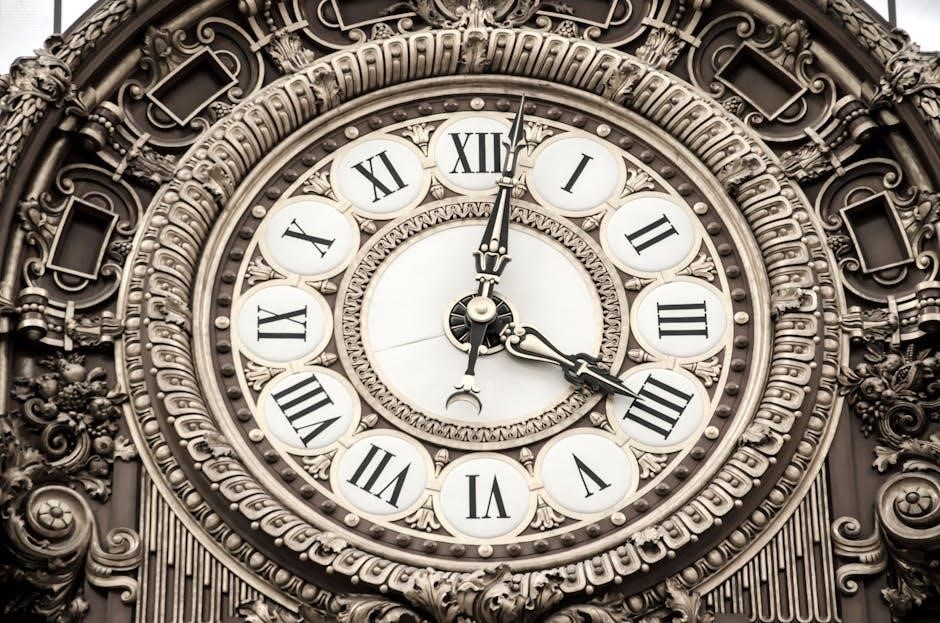
Understanding Types of Antique Clocks
Antique clocks vary widely, from grand grandfather clocks to compact mantel and wall clocks, each with unique designs, mechanisms, and historical significance, reflecting their era’s craftsmanship and purpose.
Grandfather Clocks
Grandfather clocks are large, freestanding timepieces with weight-driven movements, often housed in tall cases made of oak or mahogany. Their intricate carvings and mechanical complexity make them highly valued. Authentic examples often bear maker signatures or hallmarks, with their worth determined by condition, rarity, and historical provenance.
Mantel Clocks
Mantel clocks are compact, decorative timepieces designed to sit on shelves or mantelpieces. Often crafted from materials like marble, slate, or wood, they feature intricate details and enamel dials. Their value is influenced by condition, rarity, and maker reputation. Popular in the 18th and 19th centuries, they remain sought-after collectibles.
Wall Clocks
Wall clocks are large, decorative pieces designed to mount on walls, often serving as focal points in rooms. Made from wood, metal, or other materials, they feature diverse styles, from minimalist to ornate. Their value depends on age, condition, and craftsmanship, with rare or historically significant examples commanding higher prices at auctions and sales.
Bracket Clocks
Bracket clocks are portable, spring-driven timepieces with a distinctive bracket or handle for easy transport. Originating in the 17th century, they often feature intricate engravings and ornate casework. Rarer examples, especially those by renowned makers, can fetch significant sums due to their historical significance and craftsmanship, making them sought-after collector’s items in auctions and specialized sales.
How to Identify an Antique Clock
Examine hallmarks, signatures, and movement details to determine authenticity. Analyze the case, dial, and construction for age indicators. Consult experts for accurate valuation and historical context.
Hallmarks and Signatures
Hallmarks and signatures are crucial for verifying the authenticity and origin of antique clocks. These marks, often found on the dial, movement, or case, reveal the maker, region, or era. They are essential for dating and valuing clocks, as they provide provenance and historical context.
Movement Identification
Movement identification involves analyzing the clock’s internal mechanism to determine its type, era, and origin. Key features include the material, gear count, and decorative elements. Mechanical movements, often weight or spring-driven, reveal craftsmanship and age. Unique engravings or patents can also trace the maker, aiding in valuation and historical accuracy.
Case and Dial Analysis
Examine the clock’s case and dial for materials, craftsmanship, and design. Wooden cases may feature intricate carvings, while metal cases often showcase ornate detailing. Dials vary in numeral styles, from Roman to Arabic, and finishes, such as enamel or brass. These elements help date and authenticate the clock, influencing its value and provenance.
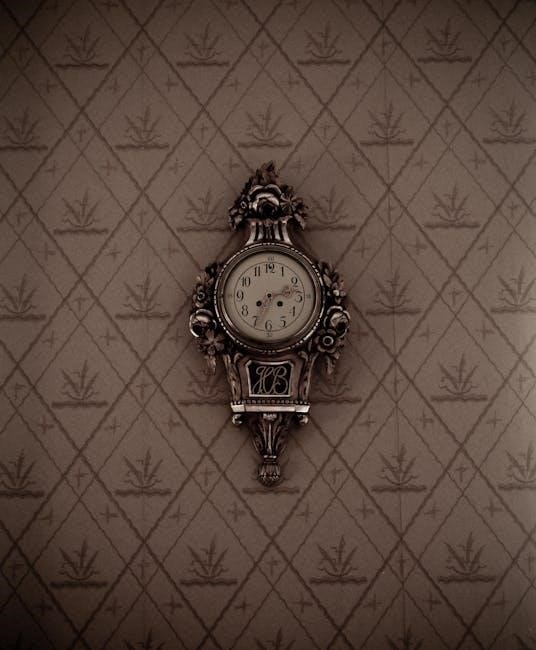
Determining the Age of an Antique Clock
Determining the age of an antique clock involves examining its materials, construction, and patent dates, as well as its design trends and historical context.
Materials and Construction
Antique clocks often feature high-quality materials like brass, oak, and mahogany. Earlier clocks may have hand-carved wood or engraved brass, while later pieces might use mass-produced components. Examining the craftsmanship and materials helps determine the clock’s era and authenticity, as older clocks typically exhibit more intricate detailing and superior construction techniques.
Patent Dates and Historical Context
Patent dates and historical context are crucial for dating antique clocks. Innovations like pendulum clocks in the 17th century or quartz movements in the 20th century mark significant eras. Understanding these technological advancements and their timelines helps pinpoint a clock’s age and historical significance, aiding accurate identification and valuation processes for collectors.
Design Trends and Styles
Antique clocks reflect evolving design trends, from ornate Baroque to sleek Art Deco. Materials like brass and mahogany were popular, while intricate carvings and enamel dials added artistic flair. Understanding these stylistic shifts helps identify periods and influences, enhancing the appreciation and valuation of timepieces among collectors and enthusiasts alike historically.
Antique Clock Price Guide
This guide provides insights into antique clock pricing, covering factors like condition, rarity, and historical significance. Prices vary widely, reflecting craftsmanship, age, and demand.
Factors Affecting Value
The value of an antique clock is influenced by its condition, rarity, historical significance, and provenance. Original components, such as movements and dials, significantly impact worth. Additionally, the clock’s functionality, maker’s reputation, and design trends play crucial roles in determining its market price and collector appeal.
Price Ranges for Different Types
Antique clocks vary widely in price, from a few hundred to several thousand dollars. Grandfather clocks often range between $500 to $10,000, while mantel clocks may cost $300 to $3,000. Wall and bracket clocks typically fall between $200 to $2,000, depending on age, condition, and rarity.
Rarity and Provenance
Rarity and provenance significantly influence an antique clock’s value. Limited edition or unique pieces from esteemed makers, like Seth Thomas, command higher prices. Documentation of ownership history enhances value, as collectors seek exclusivity and historical connections, making rare clocks with verified provenance highly sought after in the market.
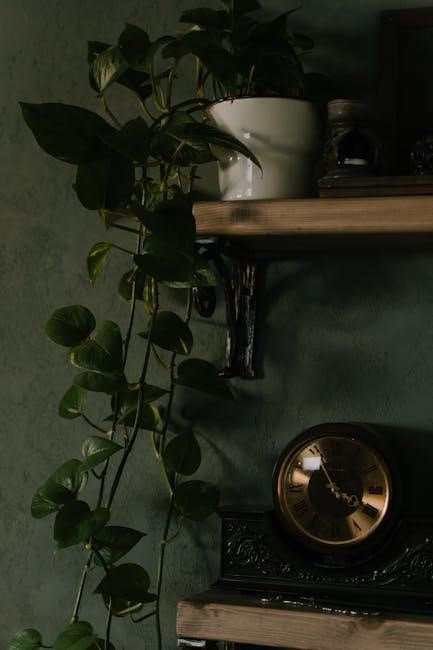
Key Makers and Manufacturers
Prominent clockmakers like Seth Thomas and renowned manufacturers have left lasting legacies, with their hallmarks and reputations significantly influencing market demand and collector interest in antique clocks.
Notable Clockmakers
Renowned clockmakers like Seth Thomas, John Harrison, and François Tourte are celebrated for their innovation and craftsmanship. Their signatures and unique styles significantly influence the value and desirability of antique clocks in the market, making their pieces highly sought after by collectors and historians alike.
Brand History and Reputation
Prestigious brands with rich histories, such as Seth Thomas and Waterbury Clock Company, have built lasting reputations through quality craftsmanship. Their historical significance and trusted names enhance the value of their timepieces, making them highly desirable in both antique markets and private collections.
Signature Styles
Distinctive signature styles of renowned clockmakers, such as intricate engravings or unique dial designs, often serve as identifying markers. These stylistic traits, reflecting the craftsmanship of specific eras or makers, significantly influence the value and desirability of antique clocks, making them highly sought after by collectors and historians alike.
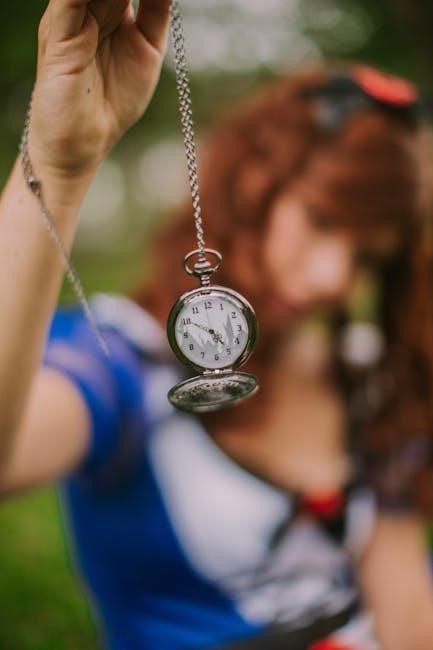
Restoration and Maintenance
Proper restoration and maintenance are crucial for preserving the functionality and value of antique clocks. Regular cleaning, lubrication, and precise repairs ensure these timepieces remain operational and retain their historical charm, while professional expertise is often essential for complex restorations.
Professional Restoration
Professional restoration is critical for preserving the integrity of antique clocks. Skilled horologists use specialized techniques to repair movements, refinish cases, and replace worn components while maintaining historical accuracy. This expertise ensures timepieces function optimally and retain their value, often requiring detailed knowledge of period-specific craftsmanship and materials.
DIY Maintenance Tips
Regular cleaning with soft brushes and gentle polishing can preserve your antique clock’s condition. Ensure proper winding techniques to avoid mechanism strain. Maintain a stable environment, avoiding direct sunlight and moisture. Lubricate hinges sparingly and inspect pivot holes annually. These simple steps help preserve functionality and aesthetic appeal without professional intervention.
Common Repair Needs
Antique clocks often require repairs due to worn mechanical parts, rust, or damaged dials. Issues like broken mainsprings, gear wear, and loose joints are frequent. Addressing these promptly prevents further damage. Professional restoration is recommended for complex problems, while minor adjustments can sometimes be handled with careful DIY approaches to preserve functionality and value.
Collecting Antique Clocks
Collecting antique clocks offers a rewarding journey into history, craftsmanship, and timeless elegance, appealing to both enthusiasts and investors seeking unique, functional pieces with enduring value.
Current Market Trends
The antique clock market remains robust, with consistent demand for rare and well-preserved pieces. Factors like condition, rarity, and historical significance heavily influence value. Grandfather clocks have seen a notable decline in value, while functional, unique pieces retain strong appeal. Digital platforms and auctions continue to democratize access, fueling collector engagement and competitive pricing.
Building a Collection
Start by researching and understanding different clock types, eras, and makers. Begin with affordable, well-conditioned pieces, focusing on rarity and historical significance. Seek expert appraisals to ensure authenticity and value. Regular maintenance ensures functionality, preserving your investment. Grow your collection thoughtfully, balancing personal interest with market demand and cultural significance.
Investment Potential
Antique clocks can be a rewarding investment, with rare and high-quality pieces appreciating over time. Focus on clocks with historical significance, unique craftsmanship, and provenance. Market trends show consistent demand for well-preserved timepieces. Professional appraisals are crucial to determine value and potential returns. A strategic approach balances emotional appeal with financial gain.
Where to Buy or Sell Antique Clocks
Explore auction houses, specialized dealers, and online marketplaces like eBay and Etsy. Estate sales and antique shops also offer rare opportunities to acquire or sell vintage timepieces effectively.
Auction Houses
Prominent auction houses like Christie’s and Sotheby’s specialize in antique clocks, offering rare and historically significant pieces. These platforms provide detailed descriptions, provenance, and expert valuations, attracting serious collectors. Auctions often fetch high prices due to competitive bidding and the prestige associated with such esteemed sales venues.
Specialized Dealers
Specialized dealers focus exclusively on antique clocks, offering in-depth knowledge and curated collections. They often provide detailed appraisals, restoration services, and guarantees of authenticity, catering to both seasoned collectors and newcomers seeking rare, high-quality timepieces that retain historical and monetary value in the competitive market.
Online Marketplaces
Online marketplaces offer a vast platform for buying and selling antique clocks, providing access to global listings. They feature detailed descriptions, images, and price guides, enabling collectors to compare items and research market trends effectively, while also offering convenience and accessibility for enthusiasts worldwide.
This guide provides a comprehensive resource for identifying and valuing antique clocks, offering insights into historical context, craftsmanship, and market trends to enhance appreciation and informed investment.
Final Thoughts on Antique Clocks
Antique clocks hold enduring value, blending craftsmanship, history, and artistry. Their intricate mechanisms and timeless designs make them cherished collectibles. Understanding their origins, materials, and historical context enhances appreciation, while informed valuation ensures sound investments, encouraging further exploration and passion for these mechanical masterpieces.
Encouragement for Further Research
Exploring antique clocks offers endless discoveries. Dive into historical records, consult experts, and join collector communities to deepen your knowledge. Attend auctions, workshops, and exhibitions to gain hands-on insights. Embrace the journey of uncovering hidden gems and stay updated on evolving market trends to enhance your collection and expertise meaningfully.

